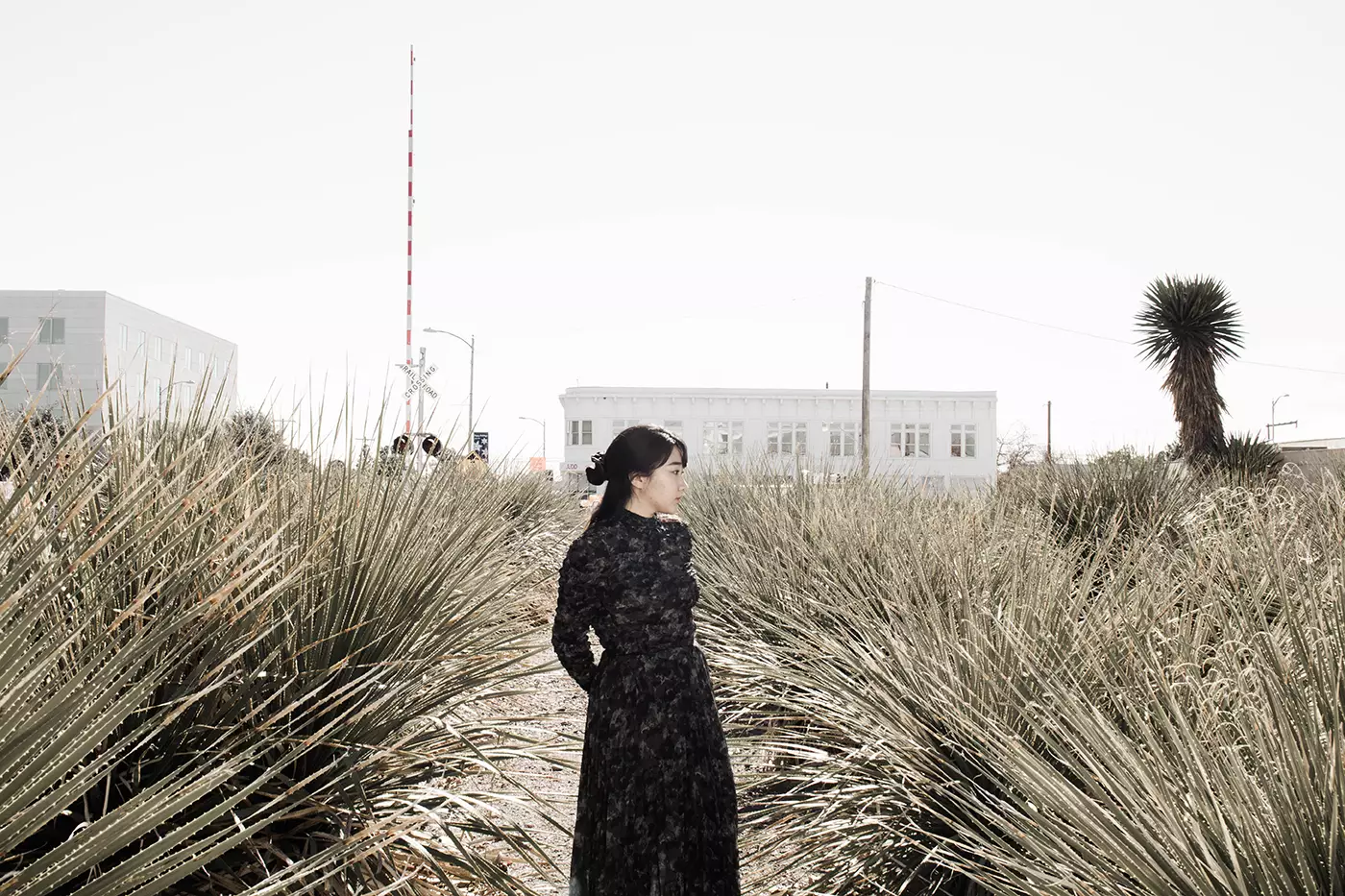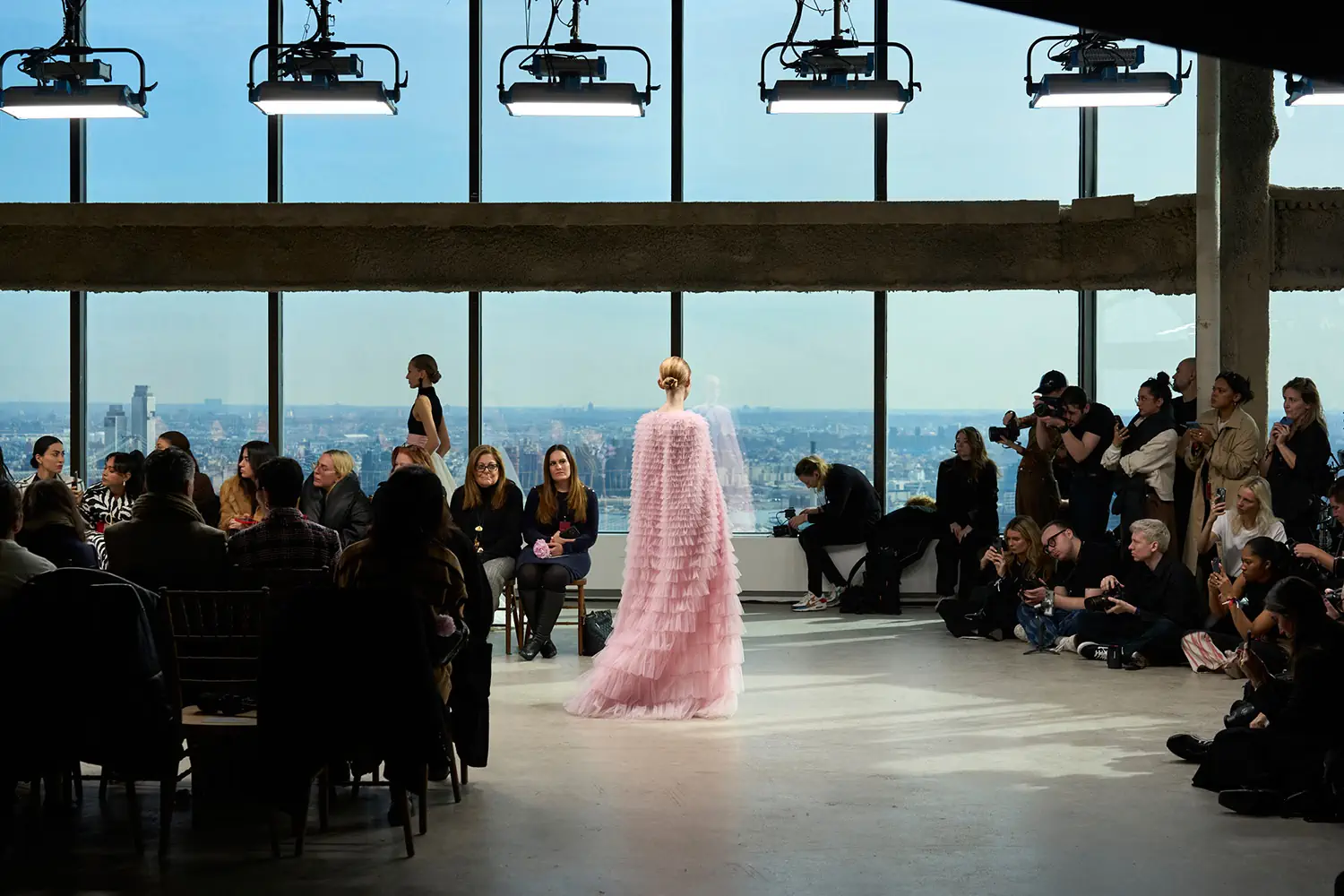Often ascribed to womenswear, modest dressing refers to long hemlines, long sleeves and high necks, but it can also be seen in menswear, in the form of longer-length shirts and loose-fitting pants, and in both cases a looser, more relaxed fit.
The practice of modest dressing relates to a preference for covered-up clothing for personal or religious reasons, but recently it’s also made an appearance in the fashion world with modest and stylish teen clothing, online boutiques for conservative clothing, modest clothing companies and designers opting to produce more conservative apparel.
In the couture stories for Spring/Summer 2023, modest dress appeared on the catwalk in the form of Blumarien’s ethereal Y2K-inspired draping, Max Mara’s effortlessly cool all-black head-to-toe minimalism and Giambattista Valli’s voluminous tulle confections (reminiscent of Villanelle’s iconic pink Molly Goddard dress in “Killing Eve“).
Many layers
Fashion tends to be a barometer for the zeitgeist: some commentators reflected on the latest trends as a desire to feel cocooned and protected, a continuation of the trends that arose in lockdown. Elsewhere, especially in Western fashion, theories like the hem-line index persist, with the idea being that shorter skirts tend to reflect healthier economic times.
It’s an interesting idea, but one that has since been debunked. The driving influences for fashion trends tend to be far more nuanced and varied, relating to a multitude of complex social, economic and cultural factors, a key one of which is the body itself.
You can also read:
Jungle expedition inspires Puma x Perks and Mini’s Spring/Summer 2023 collection
Valentino Vintage launches swap-shops across major cities worldwide
Charles de Vilmorin departs Rochas following a two-year tenure
Moving with the times
It is difficult to separate the concept of body image from fashion, and all too often, this is imbued with a sense of shame, from the continued struggles with inclusivity and representation on the catwalk, to the objectification and policing of women’s bodies.
The use of form-fitting or provocative clothing in Western fashion as rebellion might appear counterintuitive, but its origins lie in the subversion of items once designed to restrict women’s movement in the most literal sense: one example of this being Vivienne Westwood’s use of punk-rock corsetry in the 1970s.
Conversely, more relaxed or modest styles of dress have been used: It might be hard to believe now, but at one point the concept of women wearing trousers was viewed by some as scandalous, just as the drop waist was, and more recently, the widespread rejection of high heels.
Freedom to choose
Modest dress is worn as a religious practice in many traditions, including Hinduism, Islam, Christianity and Judaism, yet misconceptions persist surrounding modest dress in relation to cultural values, often by those unable to differentiate between a person choosing to dress modestly and those living under oppression with little choice but to do so.
No matter our style of dress, clothing is closely linked to self-image. When we are shamed or pressured into conforming to particular standards, whether by an individual or an organization, this can have a detrimental impact on our mental and emotional health. Even the most utilitarian dresser (who might also claim that fashion is frivolous) does so out of choice.
In that choice lies the freedom to dress in alignment with one’s personal values and preferences, in a way that feels authentic to the individual. Whatever the reasons are for the latest trend in modest dressing, this is what matters most.








